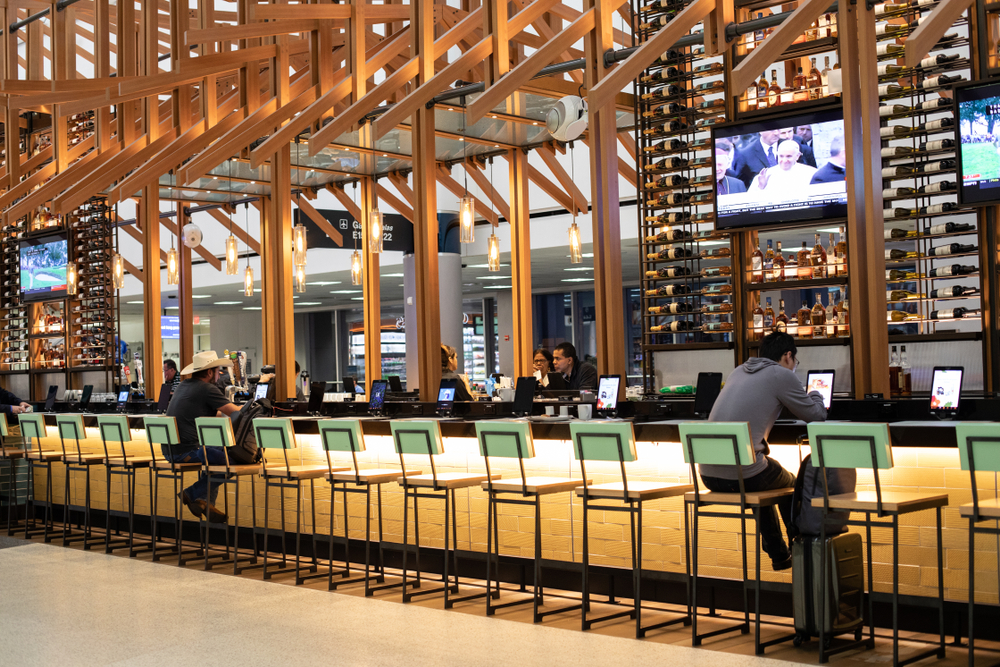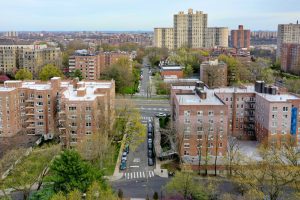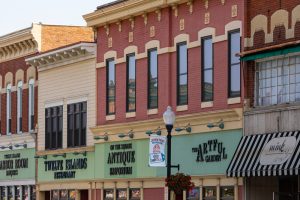The high rate of crime in and around major cities like Houston is a huge deterrent for many people. As more people populate a city or town, the likelihood of criminal activity increases.
If you’re considering relocating to Midtown Houston, you might be wondering if the area is safe.
Criminal activity in Midtown Houston is 44 percent lower than in neighboring Texas towns. Midtown, which is adjacent to Downtown Houston, is a safer alternative to nearby Galleria-Uptown, Montrose, and other popular Houston neighborhoods.
Midtown saw a resurgence of sorts in the nineties, with more money pouring into the district.
Table of Contents
Can you walk around in Midtown Houston?

Since the transition, Midtown has become one of Houston’s most walkable districts, with an abundance of restaurants, bars, and other entertainment establishments.
Frequent brainstorming sessions on community security, operation and repair, and the arts and entertainment are held throughout the community. You can get as involved in the community as you want.
Can you bike safely around Midtown?
Midtown is a great place to ride a bike if you’re looking to get to a location that isn’t within walking distance. It’s pretty common for visitors to hop on a bike-share or their own and head to Houston’s Montrose neighborhood, which is also a fun, diverse area.
It’s pleasant (and comfortable) to bike around Houston, as per Visit Houston, because of the city’s streetscape, historic neighborhoods, and unique architecture.
Also, if you land yourself in Montrose or another area and don’t want to bike home, you may take your bike and proceed towards the B-Station to catch a rail service back.
Biking to Discovery Green and Baldwin Park is a great way to get some fresh air.
Is Midtown Houston a suitable place to live?

More than 15 thousand people live in Houston’s Midtown district. Located in Harris County, Midtown has been ranked as one of the greatest locations to reside in Texas.
Renting a house in Midtown gives occupants a sense of being in the middle of a bustling city.
There is also a plethora of pubs, eateries, cafés, and parks inside the Midtown area. Midtown is home to a large number of young professionals, many of whom identify as liberal.
Midtown’s public schools are among the best in the city.
Overall, other than a crime rate above the state’s average, Midtown Houston is known for its diversity, nightlife, being good for families, and decent public schools.
How affordable is Midtown Houston?
Young families and executives will appreciate the city’s low cost of living as well as its high level of safety. The average home is $230,000 and the average monthly rent is $1,200.
You can save money by using public transit to get to and from work in Houston, or by driving only one automobile for a family carpool.
Is it difficult to find apartments in the Midtown Houston area?

You’ll find modern apartment complexes in abundance here. If Midtown has been on your radar for a while now, you’ll have a fairly easy time finding a place to rent.
More than 200 housing complexes are found in Midtown. It’s hard to go wrong with anything in Midtown, whether you’re searching for a luxury elevated or mid-rise home or something more antique and unique.
What are Midtown Houston’s entertainment options like?
There are numerous places to have fun in Midtown Houston. The Moon, the Howl, the Ensemble Theater, and the Continental Club are all great places to catch a show.
On a rainy day, check out one of the many museums in the area. Alternatively, you can put your sleuthing abilities to the test while having fun in an Escape Room.
How is Midtown Houston structured?

Houston’s Midtown area, situated to the southwest of Downtown, is a prominent part of the city. It combines residential areas with business districts, entertainment venues, and green areas for recreation.
Between Downtown and Midtown, you’ll see a section of Interstate 45 towering hovering above, referred to as the Pierce Elevated. The METRORail Red Line and Main Street serve as anchors in the city.
Flanking the west side of Midtown is Montrose, also known as Neartown, while the Museum District lies toward the south.
On the east side is Interstate 69. Since 2015, there have been a total of 325 blocks completing Midtown, covering 1.24 square miles, a population that has almost doubled from the 8,600 it had then.
How are the restaurants in Midtown Houston?
Nearly 216 distinct dining, drinking, and coffee establishments can be found in Midtown Houston alone. Walkscore states that individuals in Midtown Houston can also stroll to various eateries, taverns, and coffee houses in only ten minutes.
No matter the type of food you’re looking for, Midtown has plenty of options to satisfy your hunger.
Midtown’s top eateries are just a short walk away from most places. You’ll find places like JINYA Ramen Bar immediately across the road, as are Gaslamp Gastropub, Maple Leaf Pub, and Brennan’s, so you’ll never be far from a good meal.
What else is there to do in Midtown Houston?

Want to take around some of Houston’s best art, eating, and nightlife? Head to Houston’s Midtown, where you’ll find everything within a few blocks of each other.
This vibrant area of Houston is home to a slew of must-see attractions.
Relax at one of Midtown’s many parks after a daily walk, bicycle ride, or outside yoga session. The three-acre Midtown Park, a green space with a water feature, children’s playground, dog park, and seasonal festivals, is perfect for families.
Bagby Area’s La Calle features a Mexican-style take-out restaurant and a pleasant dog park. Make sure to take a picture with the “MIDTOWN” sign in the background.
What architectural styles will you find in Midtown Houston?
Midtown features many homes and buildings that are representative of nineteenth-century style Victorian. Although decimated after the Great Depression, Midtown has since recovered and features buildings featuring more modern architecture as well.
A surge of young people and an active social scene fueled a demographic change in the Midtown area in the early nineties, and it continued far into the 2000s, thanks to the establishment of the Midtown Redevelopment Authority and increased attention to Houston’s central business district.
Why do Midtown community names seem to have a pattern?

There are numerous parks, monuments, and companies with “Midtown” in their name throughout the redeveloped sections of Houston, such as Midtown itself.
It’s a way to unite the area’s economy and draw in more tourists and inhabitants. Midtown’s tremendous growth has continued into the 2010s.
There are still problems with crime, poor infrastructure, long-term homelessness, and geographic inequities in public investment in the district, despite these efforts.
What are the demographics of Midtown Houston?
In 2012, Midtown had a population of approximately 8,600 people. The population of Midtown grew by 65 percent in ten years.
5,311 people were living in the Midtown District’s Super Neighborhood #62 Midtown in 2000, according to the census. The racial composition of the neighborhood includes 45 percent White and 28 percent Hispanic or Latino.
Eighteen percent of the population are Afro-American or Black, six percent are Asian, and less than one percent are Native Americans or other races, with only a small percentage of the total population belonging to any other ethnicity.
More than half the population is over the age of 18, with far more men than women living there. There are only a handful of people living in nursing homes.
Is public transportation available in Midtown Houston?

The Harris County Metropolitan Transportation Authority (Metro) serves as the area’s transportation authority. The Red Line of the METRORail passes right through Midtown.
While in Midtown, riders can access three stations (Wheeler, Ensemble/HCC, and McGowen).
Wheeler Station is served by bus routes 182, 65, 60, 25, 8, and 1. 77, 70, 60, 52, 35, 30, 24, 15, and 11 are some of the buses that stop at the Downtown Transit Center, which is located next to Midtown and in Downtown. From Route 3 to Route 283, a plethora of different routes serves Midtown.
Midtown houses Houston’s interstate bus station, from which Greyhound Lines and a slew of other bus companies in Central America operate. The Greyhound Terminal was dubbed “greatest site to people watch” by the Houston Press in 2008.
What type of local government does Midtown Houston have?
Midtown is currently divided between the Houston C and D council districts. In the past, there were two districts: I and D.
By allocating a part of ad valorem taxes earned within the Midtown Tax Increment Investment Zone, the City of Houston was able to finance infrastructure and pay back developers.
Are there any historic buildings in Midtown Houston?

Located in Midtown, the Roman Catholic Archdiocese of Galveston-Holy is a prominent landmark. The parish was founded in 1913.
Due to the Great Depression’s influence on the city’s finances, Pastor Joseph Konkel regarded the parish hall as the metropolitan’s sole substantial construction project.
The number of parishioners has dwindled since the 1970s as more people moved to the suburbs. The church purchased 7,000 square feet of office space in 1994, which is used for educational programs.
After 1994, the gentrification of Midtown led to an increase in the number of parishioners.
A 15,000-square-foot extension was completed in 2004. As of 2004, about 25 percent of the congregation was Vietnamese, and there are two Vietnamese-language masses held each week in the church.
There are five Vietnamese Catholic churches in the Houston region and this church is one of them.

















